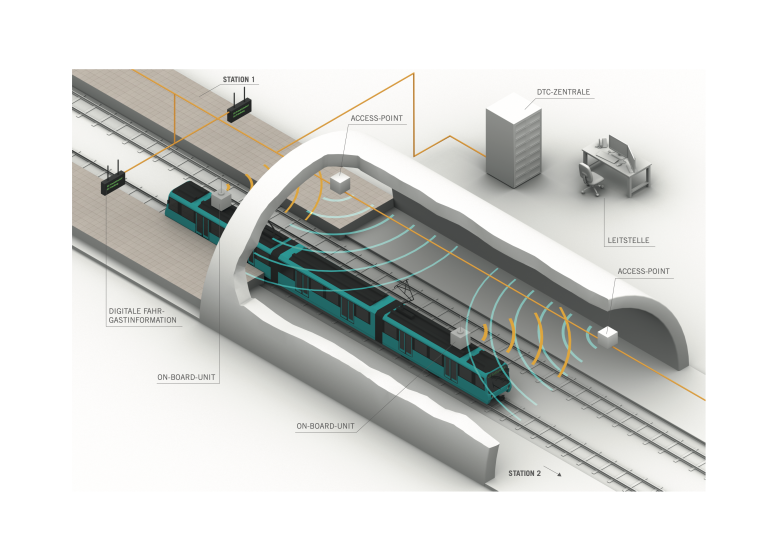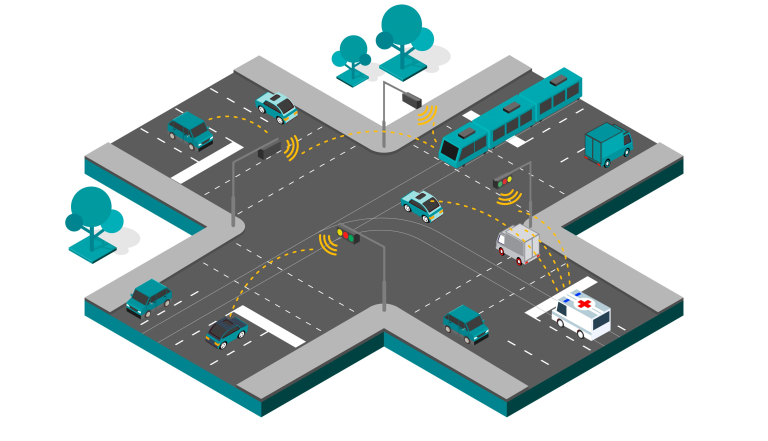DTC
Digital Train Control Frankfurt
The train control system
of the future
The digital signal and train control system “Digital Train Control System Frankfurt” is one of the most important future-focussed projects of the city of Frankfurt am Main. It involves replacing the existing train control system with a digital signal and train control system based on Communication-Based Control Technology (CBTC) in the city railway’s tunnel system.
By 2031, all nine lines of the Frankfurt am Main light rail system are to be converted to a digital train control system. The “B line” with the U4 and U5 lines, including the extension into the city’s “Europaviertel”, will be the first to be completed in 2025 according to the current planning status.
By 2033, all nine lines of the Frankfurt am Main light rail system are to be converted to a digital train control system. The “B line” with the U4 and U5 lines will be the first to be completed.
The modern and efficient train control technology not only ensures more trains on the line, but also greater timing accuracy and reliability. It enables a more energy-efficient operation with energy savings of up to 15 per cent, as well as greater passenger comfort thanks to smoother acceleration and braking. It also counteracts wear and tear on vehicles and rails.
The CBTC system makes it possible to travel in “wandering spatial distancing”. This means that trains no longer run in block sections, but at braking distance from each other.
In close cooperation with the ‘Frankfurt MIND (+)’ project, DTC will increase the capacity and attractiveness of the underground system and thus increase the share of rail-based public transport in urban traffic. Both projects aim at holistic traffic optimisation (both in the tunnel and above ground).
The “CBTC” train control system will increase the capacity and attractiveness of the underground system and thus increase the share of rail-based public transport in urban traffic. This will ultimately lead to fewer pollutants being emitted and cleaner air in the city.
The project has a volume of around €211 million.
VGF reached two important milestones in the project in December 2021: First, the Hessian Minister of Economics and Transport handed over a funding notice in the amount of 95.3 million euros, with which the federal government and the state of Hesse are providing financial support for the project. Then VGF announced who the key partner in the project will be: Siemens Mobility.The project made its first visible progress in July 2023 with the start of the conversion of the B section. Almost all the necessary cables and parts of the infrastructure were installed in the tunnel during the two closures.
Another important milestone was reached in September 2024 with the first automated test run of a U5-prototype.
Outlook
Various outdoor and indoor installations and C-ITS components are planned for B-line by summer 2025. Various rooms required for the technology will also be completed during this period. Further prototypes will be converted between April and July 2025.
Further project steps:
- 2027 Completion of conversion “B” line
- 2030 Completion of conversion “A” route
- 2033 Completion of conversion of “C” route and tram
Social Networks
© Stadtwerke Verkehrsgesellschaft
Frankfurt am Main mbH


